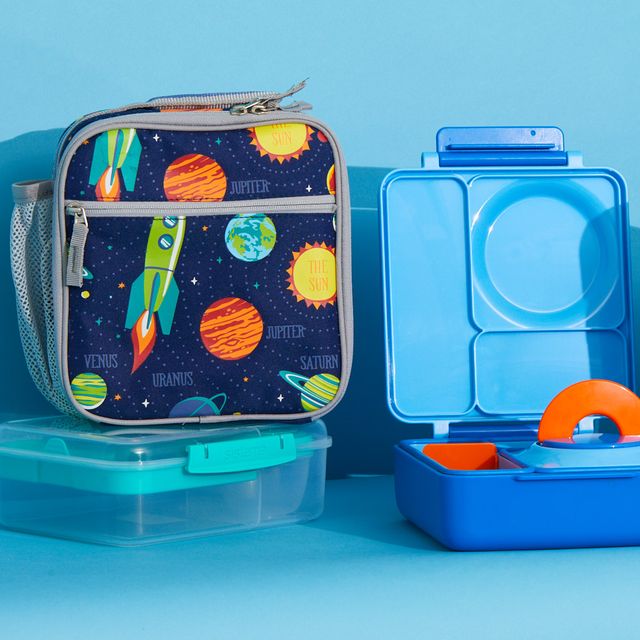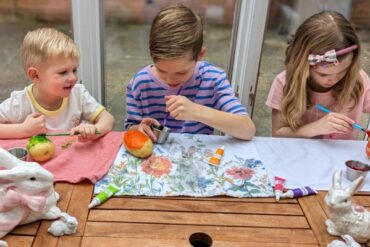Unbox Happiness: The Ultimate Guide to Packing Fun and Nutritious Children’s Lunchboxes
Hey there, super parents! Are you ready to dive into the colorful world of children’s lunchboxes, where nutrition meets creativity? With our trusty guide, say goodbye to the morning scramble and hello to stress-free, healthy, and absolutely delightful lunchtime adventures for your little ones. Let’s embark on a joyful journey to make every lunchbox a treasure chest of yummy and nutritious goodies!
Why a Well-Balanced Lunchbox Matters
Before we jump into the “how”, let’s talk about the “why”. A well-balanced lunchbox is crucial for your child’s growth and development. It fuels their day at school, supports cognitive function, and provides the energy they need for learning and play. Plus, introducing a variety of foods can help them develop a lifelong appreciation for healthy eating. Our goal is to nurture their bodies and minds with every bite!
Starting with the Basics: The Building Blocks of a Healthy Lunchbox
- Lean Proteins: Think grilled chicken strips, turkey roll-ups, or a hard-boiled egg. Proteins are the building blocks of growth and are essential for keeping those little muscles strong.
- Whole Grains: Swap out white bread for whole-grain varieties or try quinoa salads. Whole grains are packed with fiber, helping your child feel fuller for longer.
- Fruits and Veggies: Slice ’em, dice ’em, or make fun shapes! Fresh produce provides essential vitamins and minerals, and the natural sweetness can satisfy those dessert cravings.
- Healthy Fats: Include options like avocado, nuts (if allowed at school), or cheese. Fats are vital for brain health and keep energy levels steady.
- Hydration: Water is the best choice, but you can also pop in some coconut water or milk. Staying hydrated is key for concentration and keeping those energy levels up!
Mastering the Art of Lunchbox Variation
Now that we have our staples, let’s spice things up! Consistently introducing new food items prevents lunchtime boredom and encourages a varied diet that covers all nutritional bases. A good rule of thumb is to include something new each week, whether it’s a different type of fruit, a new way of preparing veggies, or an unexpected dip for those carrot sticks.
Lunchbox Ideas to Get You Started
Ready for some inspiration? Here are some lunchbox ideas that are sure to bring a smile to your kid’s face:
- Sandwich Shapes: Use cookie cutters to transform a simple sandwich into a work of art. Go beyond circles and stars – think hearts for Valentine’s Day, or a tree for Earth Day!
- Wrap It Up: Wraps are versatile and less likely to fall apart than sandwiches. Fill them with hummus, veggies, and shredded chicken for a roll-up full of goodness.
- DIY Lunchable: Pack whole-grain crackers, slices of cheese, and some turkey. It’s a hands-on meal that kids love to assemble themselves.
- Colorful Skewers: Thread a rainbow of cherry tomatoes, cubes of cheese, and grapes onto skewers. It’s a party on a stick that’s both nutritious and fun to eat!
- Sweet Treat: A homemade oatmeal cookie or a piece of dark chocolate provides a touch of indulgence without excessive sugar.
Remember, the perfect lunchbox is one that provides nutritious content for your child and brings them joy. Stay tuned for our next installment where we will delve into even more delightful lunchbox ideas, including how to keep food safe and allergy-friendly tips, to ensure that every child can enjoy a delicious lunch they’re excited about!
Implementing these ideas will turn those simple lunchboxes into a kaleidoscope of health and happiness. Here’s to crafting lunches that nourish the body and charm the taste buds!

Five Things Parents Should Know When Preparing Children’s Lunchboxes
When it comes to preparing children’s lunchboxes, there are a few key considerations to keep in mind. Let’s explore these five essential tips that will not only ensure your child has a nutritionally sound meal but also one they’re eager to eat!
- Food Safety is Paramount: Keeping the lunchbox contents safe to eat is as important as what you pack. Use insulated lunch bags with ice packs, especially for perishable foods like dairy or meats. Pre-chill the lunchbox to help keep its contents cool until lunchtime.
- Consider the Lunchbox Layout: Use bento boxes or compartmentalized containers to keep foods separate and appealing. Kids often enjoy the presentation of their meal, and a visibly appealing layout can entice them to eat a well-rounded lunch.
- Engage Your Kids in the Planning: Get input from your children on what they like and involve them in the packing process. This engagement can increase the likelihood that they will eat their lunch and will provide you with insights into their preferences and appetites.
- Keep it Convenient: Cut fruits and vegetables into bite-sized pieces and provide easy-to-open packages. Ensure that opening the lunchbox and its contents is manageable for small hands, making lunchtime a hassle-free experience.
- Budget-friendly and Sustainable Choices: Opt for reusable containers and choose seasonal produce to keep costs down. Environmental consciousness can be taught early on by using eco-friendly packaging and avoiding single-use plastics.
Nutrient Density Over Quantity
It’s not just about the amount of food but the quality of nutrients packed into each bite. Aim for a colorful variety to ensure a range of vitamins and minerals. From bright bell peppers to deep blueberries, every color offers different health benefits, and together they provide a comprehensive spectrum of nutrients.
Adapting to Dietary Restrictions
Always consider any food allergies or dietary restrictions your child or others in their class may have. Be mindful of school policies regarding allergens such as nuts and eggs, and carefully read food labels for hidden ingredients. There are plenty of allergy-friendly snack options available that are just as delicious and safe for everyone.
Balancing Treats
While it’s essential to focus on health, a small treat can make the lunchbox exciting and give your child something to look forward to. Aim for treats that are low in added sugars and saturated fats, like yogurt-covered raisins or homemade granola bars that use natural sweeteners.
Remember Hydration
Hydration is a crucial yet often overlooked component of a well-rounded lunch. Water should be the mainstay, but adding a nutrient-dense option like milk or a 100% fruit juice without added sugars can also contribute to their daily fluid intake. Encourage your child to finish their drink by lunch end to establish good hydration habits.
As you gather your lunch-packing supplies and ingredients, keep these pivotal points at the forefront of your mind. With these expert tips and a sprinkle of creativity, you’ll be filling those lunchboxes with both love and nutrition. The lunches you pack are more than just meals; they’re expressions of care and key components to your child’s success in school and beyond. Embrace the joy of nourishing your little one with every delicious, healthful bite!
For more great articles please see here. For more information see here
Disclaimer
The articles available via our website provide general information only and we strongly urge readers to exercise caution and conduct their own thorough research and fact-checking. The information presented should not be taken as absolute truth, and, to the maximum extent permitted by law, we will not be held liable for any inaccuracies or errors in the content. It is essential for individuals to independently verify and validate the information before making any decisions or taking any actions based on the articles.




